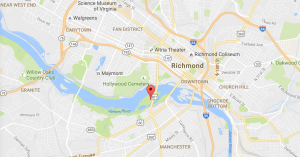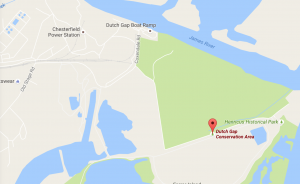Early on September 24th Sanitra and I made the trip downtown, across the (always longer than I remember it to be) bridge, and onto Belle Isle to participate in a clean up through Hands on RVA. Having been there the week prior with class, I remembered Natalie’s JRA supervisor noting that we might not find much, as Belle Isle gets cleaned up often. This was exemplified by our being there twice within the same week. His suspicion held true. Although we walked around for hours, our bags weren’t full by the end of the morning because the majority of the pieces of trash that we found were small scraps of plastic or cigarette butts.This stood out to me as being in great contrast with Dutch Gap, an area I had never heard of before we went with class yet was that heavily polluted, much more so than Belle Isle. Realizing at this point that Sanitra already wrote about exactly what I was going to, I want to add to her analysis of the disparity between the locations by proposing another way in which Dutch Gap is more heavily polluted.
Per Forsyth’s Awareness-Appraisal model, people’s perception of a place is relevant to their treatment of it. Also relevant, however, is the physical geography and location of the place and the area that surrounds it. We talked in class about how “protected areas have porous boundaries.” We spoke mainly in terms of national parks, but the same philosophy can be applied to both Belle Isle and Dutch Gap. Belle Isle is a focal point of the city – it is located in the middle of downtown and is thus associated with that area. It in turn experiences the benefits of being a top recommended tourist destination and regular haunt of locals.
Dutch Gap, conversely, is located in close proximity to the super heated water producing, green house gas emitting Chesterfield power station.
While Belle Isle is subjected to the typical urban pollution, Dutch Gap experiences a different kind of pollution as a result of being so close to the power plant.


